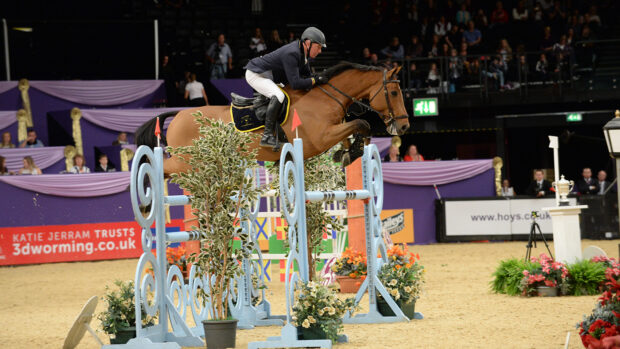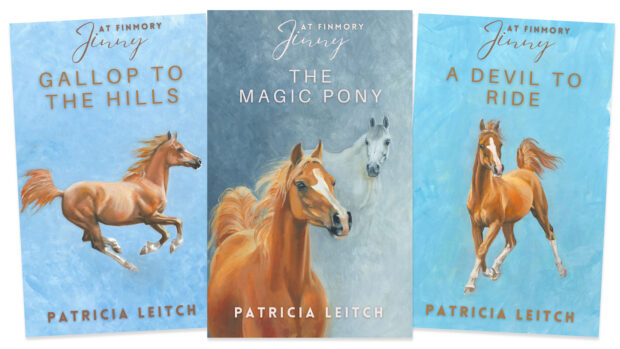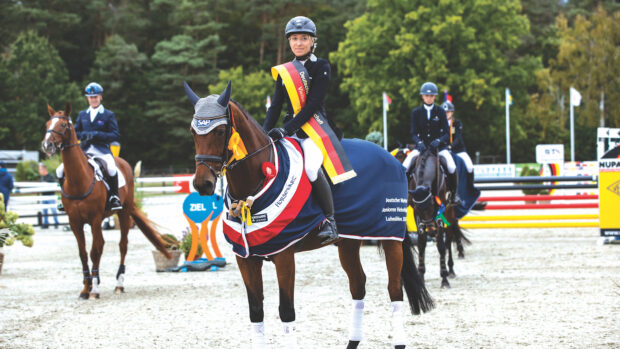Most horses, no matter what their discipline, will benefit from working with cavalletti. For Olympic champion Ingrid Klimke (pictured), riding over cavalletti is key to success. Cavalletti training improves the horse’s basic paces, develops rhythm, suppleness and cadence and helps increase fitness and agility.
This new book, Cavalletti For Dressage and Jumping, written by Ingrid and her late father Reiner Klimke, describes how to work with cavalletti on the lunge, provides valuable new schooling ideas and inspiration for dressage work, as well as numerous layouts for gymnastic jumping, including over 160 colour photographs and illustrations.

Since its first publication in 1969, Cavalletti has become a standard reference book. This fourth edition has been further revised with new photographs.
German Olympic and European gold medallist Ingrid Klimke has followed in the footsteps of her famous father, the late Dr Reiner Klimke. She is also one of very few riders to have achieved major successes at the highest level in both dressage and eventing.
The late Dr Reiner Klimke was the most successful dressage rider in the world; his achievements included Olympic gold, World dressage champion, European dressage champion and European horse trials champion. All his victories and medals were won on horses he had trained himself.
In this book extract, Ingrid explains how jumping cavalletti on a  circle can help your horse:
circle can help your horse:
Jumping on a circle
Another variation is to place four cavalletti evenly spaced around the circle, one at every quarter. A helper is useful to set the cavalletti out quickly.
The rider must make sure they look forwards to each of the cavalletti in turn. This improves reaction time as the jumps come quickly, one after the other. The circle must be maintained. The rider must also maintain the horse’s flexion, ben and rhythm over the cavalletti to prevent him from changing canter lead and running out. The challenge is to do this in an even rhythm. If the horse speeds up, he must be steadied with half-halts. The aim is to ride around the circle with the same number of strides between each of the cavalletti. After a few circles, rider and horse will find a steady rhythm and get the feel for the stride most comfortable for the horse when cantering on a circle.
After a few successful circles, the rider should take a break in walk, and repeat the exercise on the other rein.
The next stage is to ride on the inside track over the cavalletti. This requires only three canter strides. Riding on the outer track requires four canter strides. The aim of this exercise is to learn how to maintain either three or four canter strides between the cavalletti. Advanced riders should be able to alter the number of strides between each.
At a later stage, small jumps can be used instead of cavalletti, and again, it is useful to have a helper near each jump to put the poles up if they are knocked down, or to raise or lower them.
Once this exercise and its variations have been completed, the rider should be familiar with the light, forward seat or jumping seat. This is good grounding for jumping over grids and related distances.
Price: Cavalletti For Dressage and Jumping can be purchased for £19.99 via Amazon.
Published by: The Crowood Press, 2018
For all the latest equestrian news and reports, don’t miss Horse & Hound magazine out every Thursday





